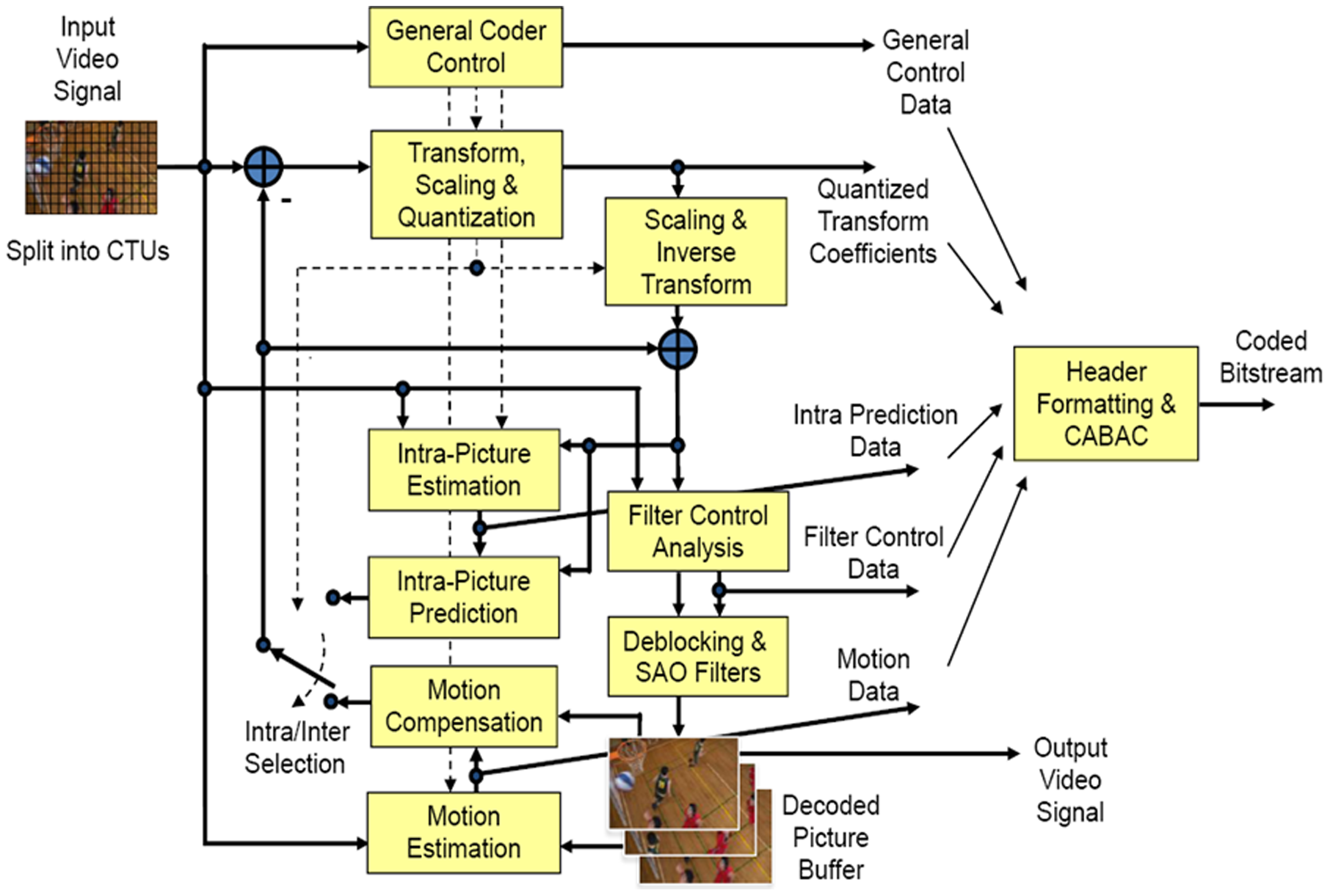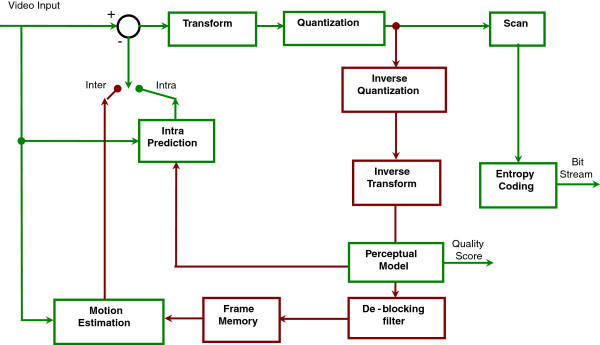|
YCoCg
The YCoCg color model, also known as the YCgCo color model, is the color space formed from a simple transformation of an associated RGB color space into a ''luma'' value (denoted as Y) and two '' chroma'' values called ''chrominance green'' (Cg) and ''chrominance orange'' (Co). It is supported in video and image compression designs such as H.264/MPEG-4 AVC, HEVC, VVC, JPEG XR, and Dirac. It is simple to compute, has good transform coding gain, and can be losslessly converted to and from RGB with fewer bits than are needed with other color models. A reversible scaled version with even lower bit depth, YCoCg-R, is also supported in most of these designs and is also used in Display Stream Compression. The more complete definition with variable bit depths of Y and chrominance values is given iITU-T H.273 History and naming The earliest documents (circa 2003) referred to this color model as YCoCg. It was adopted in an international standard for the first time in H.264/AVC (in its s ... [...More Info...] [...Related Items...] OR: [Wikipedia] [Google] [Baidu] |
JPEG XR
JPEG XR (JPEG extended range) is an image compression standard for continuous tone photographic images, based on the HD Photo (formerly Windows Media Photo) specifications that Microsoft originally developed and patented. It supports both lossy and lossless compression, and is the preferred image format for Ecma-388 Open XML Paper Specification documents. Support for the format was made available in Adobe Flash Player 11.0, Adobe AIR 3.0, Sumatra PDF 2.1, Windows Imaging Component, .NET Framework 3.0, Windows Vista, Windows 7, Windows 8, Internet Explorer 9, Internet Explorer 10, Internet Explorer 11, Pale Moon 27.2. As of January 2021, there were still no cameras that shoot photos in the JPEG XR (.JXR) format. History Microsoft first announced Windows Media Photo at WinHEC 2006, and then renamed it to HD Photo in November of that year. In July 2007, the Joint Photographic Experts Group and Microsoft announced HD Photo to be under consideration to become a JPEG st ... [...More Info...] [...Related Items...] OR: [Wikipedia] [Google] [Baidu] |
High Efficiency Video Coding
High Efficiency Video Coding (HEVC), also known as H.265 and MPEG-H Part 2, is a video compression standard designed as part of the MPEG-H project as a successor to the widely used Advanced Video Coding (AVC, H.264, or MPEG-4 Part 10). In comparison to AVC, HEVC offers from 25% to 50% better data compression at the same level of video quality, or substantially improved video quality at the same bit rate. It supports resolutions up to 8192×4320, including 8K UHD, and unlike the primarily 8-bit AVC, HEVC's higher fidelity Main 10 profile has been incorporated into nearly all supporting hardware. While AVC uses the integer discrete cosine transform (DCT) with 4×4 and 8×8 block sizes, HEVC uses integer DCT and DST transforms with varied block sizes between 4×4 and 32×32. The High Efficiency Image Format (HEIF) is based on HEVC. , HEVC is used by 43% of video developers, and is the second most widely used video coding format after AVC. Concept In most ways, HEVC is an ex ... [...More Info...] [...Related Items...] OR: [Wikipedia] [Google] [Baidu] |
Color Depth
Color depth or colour depth (see spelling differences), also known as bit depth, is either the number of bits used to indicate the color of a single pixel, or the number of bits used for each color component of a single pixel. When referring to a pixel, the concept can be defined as bits per pixel (bpp). When referring to a color component, the concept can be defined as bits per component, bits per channel, bits per color (all three abbreviated bpc), and also bits per pixel component, bits per color channel or bits per sample (bps). Modern standards tend to use bits per component, but historical lower-depth systems used bits per pixel more often. Color depth is only one aspect of color representation, expressing the precision with which the amount of each primary can be expressed; the other aspect is how broad a range of colors can be expressed (the gamut). The definition of both color precision and gamut is accomplished with a color encoding specification which assigns a di ... [...More Info...] [...Related Items...] OR: [Wikipedia] [Google] [Baidu] |
Display Stream Compression
DisplayPort (DP) is a digital display interface developed by a consortium of PC and chip manufacturers and standardized by the Video Electronics Standards Association (VESA). It is primarily used to connect a video source to a display device such as a computer monitor. It can also carry audio, USB, and other forms of data. DisplayPort was designed to replace VGA, FPD-Link, and Digital Visual Interface (DVI). It is backward compatible with other interfaces, such as HDMI and DVI, through the use of either active or passive adapters. It is the first display interface to rely on packetized data transmission, a form of digital communication found in technologies such as Ethernet, USB, and PCI Express. It permits the use of internal and external display connections. Unlike legacy standards that transmit a clock signal with each output, its protocol is based on small data packets known as ''micro packets'', which can embed the clock signal in the data stream, allowing higher resol ... [...More Info...] [...Related Items...] OR: [Wikipedia] [Google] [Baidu] |
Color Space
A color space is a specific organization of colors. In combination with color profiling supported by various physical devices, it supports reproducible representations of colorwhether such representation entails an analog or a digital representation. A color space may be arbitrary, i.e. with physically realized colors assigned to a set of physical color swatches with corresponding assigned color names (including discrete numbers infor examplethe Pantone collection), or structured with mathematical rigor (as with the NCS System, Adobe RGB and sRGB). A "color space" is a useful conceptual tool for understanding the color capabilities of a particular device or digital file. When trying to reproduce color on another device, color spaces can show whether shadow/highlight detail and color saturation can be retained, and by how much either will be compromised. A " color model" is an abstract mathematical model describing the way colors can be represented as tuples of numbers (e.g. ... [...More Info...] [...Related Items...] OR: [Wikipedia] [Google] [Baidu] |
University Of Texas At Arlington
The University of Texas at Arlington (UTA or UT Arlington) is a public research university in Arlington, Texas. The university was founded in 1895 and was in the Texas A&M University System for several decades until joining the University of Texas System in 1965. The university is classified among "R1: Doctoral Universities – Very high research activity." The fall 2021 campus enrollment consisted of 45,949 students making it the largest university in North Texas and fourth-largest in Texas. UT Arlington is the third-largest producer of college graduates in Texas and offers over 180 baccalaureate, masters, and doctoral degree programs. UT Arlington participates in 15 intercollegiate sports as a Division I member of the NCAA and Western Athletic Conference. UTA sports teams have been known as the Mavericks since 1971. History Establishment (1895–1916) The university traces its roots back to the opening of Arlington College in September 1895. Arlington College was ... [...More Info...] [...Related Items...] OR: [Wikipedia] [Google] [Baidu] |
SPIE
SPIE (formerly the Society of Photographic Instrumentation Engineers, later the Society of Photo-Optical Instrumentation Engineers) is an international not-for-profit professional society for optics and photonics technology, founded in 1955. It organizes technical conferences, trade exhibitions, and continuing education programs for researchers and developers in the light-based fields of physics, including: optics, photonics, and imaging engineering. The society publishes peer-reviewed scientific journals, conference proceedings, monographs, tutorial texts, field guides, and reference volumes in print and online. SPIE is especially well-known for Photonics West, one of the laser and photonics industry's largest combined conferences and tradeshows which is held annually in San Francisco. SPIE also participates as partners in leading educational initiatives, and in 2020, for example, provided more than $5.8 million in support of optics education and outreach programs around the ... [...More Info...] [...Related Items...] OR: [Wikipedia] [Google] [Baidu] |
VCEG
The Video Coding Experts Group or Visual Coding Experts Group (VCEG, also known as Question 6) is a working group of the ITU Telecommunication Standardization Sector (ITU-T) concerned with standards for compression coding of video, images, audio, and other signals. It is responsible for standardization of the "H.26x" line of video coding standards, the "T.8xx" line of image coding standards, and related technologies. Administratively, VCEG is the informal name of Question 6 (Visual, audio and signal coding) of Working Party 3 (Audiovisual technologies and intelligent immersive applications) of ITU-T Study Group 16 (Multimedia and related digital technologies). Its abbreviated title is ITU-T Q.6/SG16, or more simply, ITU-T Q6/16. The goal of VCEG is to produce ITU-T Recommendations ( international standards) for video coding and image coding methods appropriate for conversational (e.g. videoconferencing and video telephony) and non-conversational (e.g., streaming, broadcast, fi ... [...More Info...] [...Related Items...] OR: [Wikipedia] [Google] [Baidu] |
Joint Video Team
Advanced Video Coding (AVC), also referred to as H.264 or MPEG-4 Part 10, is a video compression standard based on block-oriented, motion-compensated coding. It is by far the most commonly used format for the recording, compression, and distribution of video content, used by 91% of video industry developers . It supports resolutions up to and including 8K UHD. The intent of the H.264/AVC project was to create a standard capable of providing good video quality at substantially lower bit rates than previous standards (i.e., half or less the bit rate of MPEG-2, H.263, or MPEG-4 Part 2), without increasing the complexity of design so much that it would be impractical or excessively expensive to implement. This was achieved with features such as a reduced-complexity integer discrete cosine transform (integer DCT), variable block-size segmentation, and multi-picture inter-picture prediction. An additional goal was to provide enough flexibility to allow the standard to be applie ... [...More Info...] [...Related Items...] OR: [Wikipedia] [Google] [Baidu] |
Video Coding Experts Group
The Video Coding Experts Group or Visual Coding Experts Group (VCEG, also known as Question 6) is a working group of the ITU Telecommunication Standardization Sector (ITU-T) concerned with standards for compression coding of video, images, audio, and other signals. It is responsible for standardization of the "H.26x" line of video coding standards, the "T.8xx" line of image coding standards, and related technologies. Administratively, VCEG is the informal name of Question 6 (Visual, audio and signal coding) of Working Party 3 (Audiovisual technologies and intelligent immersive applications) of ITU-T Study Group 16 (Multimedia and related digital technologies). Its abbreviated title is ITU-T Q.6/SG16, or more simply, ITU-T Q6/16. The goal of VCEG is to produce ITU-T Recommendations ( international standards) for video coding and image coding methods appropriate for conversational (e.g. videoconferencing and video telephony) and non-conversational (e.g., streaming, broadcast, fi ... [...More Info...] [...Related Items...] OR: [Wikipedia] [Google] [Baidu] |
Moving Picture Experts Group
The Moving Picture Experts Group (MPEG) is an alliance of working groups established jointly by ISO and IEC that sets standards for media coding, including compression coding of audio, video, graphics, and genomic data; and transmission and file formats for various applications.John Watkinson, ''The MPEG Handbook'', p. 1 Together with JPEG, MPEG is organized under ISO/IEC JTC 1/ SC 29 – ''Coding of audio, picture, multimedia and hypermedia information'' (ISO/IEC Joint Technical Committee 1, Subcommittee 29). MPEG formats are used in various multimedia systems. The most well known older MPEG media formats typically use MPEG-1, MPEG-2, and MPEG-4 AVC media coding and MPEG-2 systems transport streams and program streams. Newer systems typically use the MPEG base media file format and dynamic streaming (a.k.a. MPEG-DASH). History MPEG was established in 1988 by the initiative of Dr. Hiroshi Yasuda ( NTT) and Dr. Leonardo Chiariglione ( CSELT). Chiariglione was the g ... [...More Info...] [...Related Items...] OR: [Wikipedia] [Google] [Baidu] |






